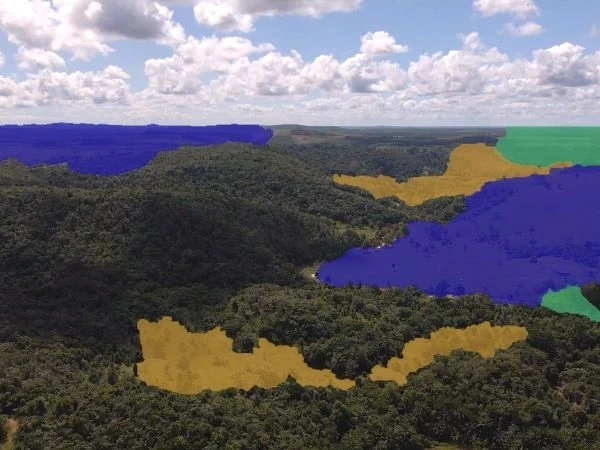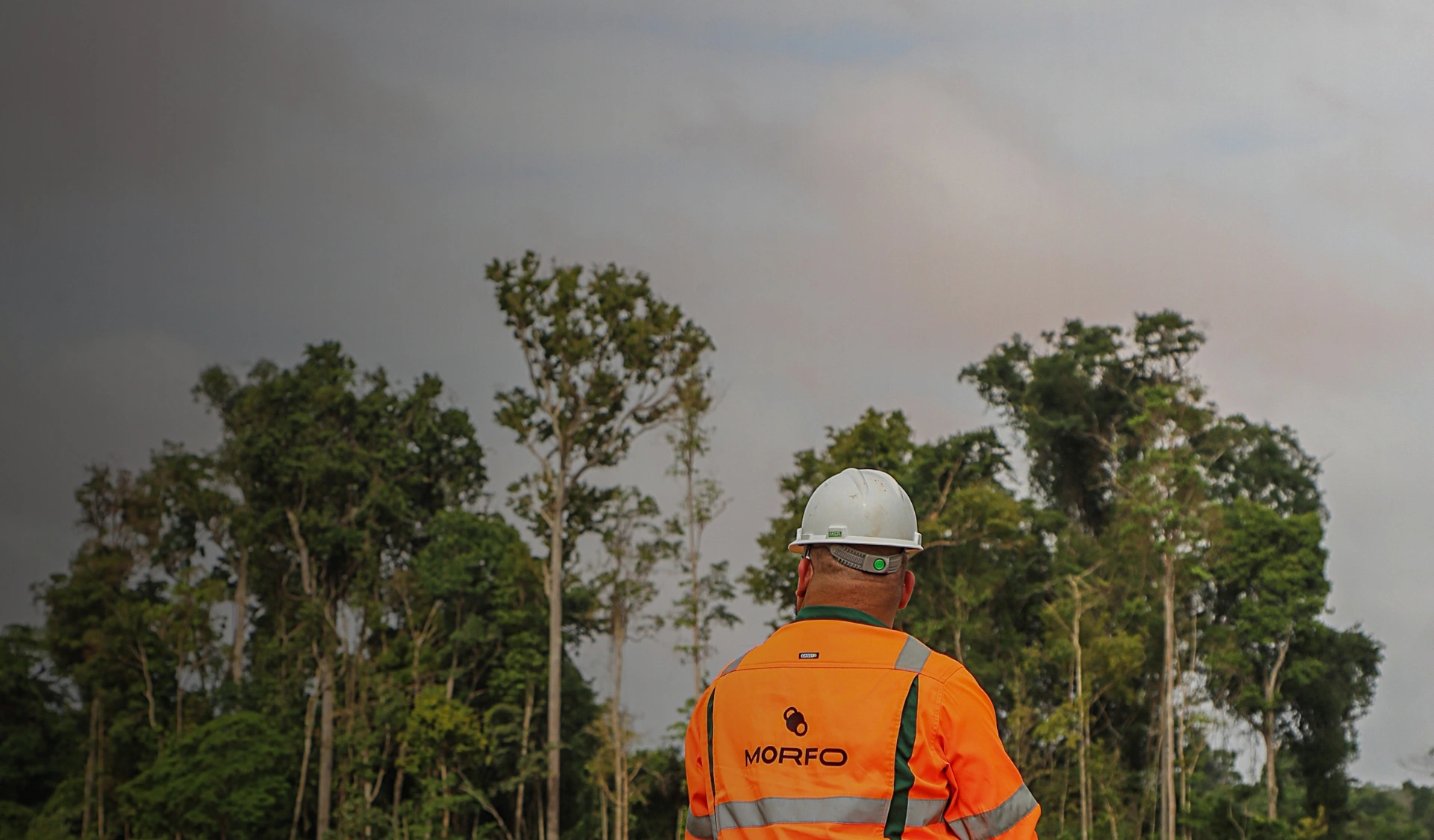By 2022, 90% of reforestation projects worldwide will be based on low-biodiversity seedlings, and 45% of projects will be single-species (World Resources Institute). Mono-species reforestation is the practice of planting only one species of tree in a particular area. While single-species reforestation may seem like a quick and easy solution for restoring forests, the negative impacts of this method are in fact numerous. These identical tree-planting methods can have dramatic consequences for the heritage and survival of entire regions. And there are many reasons for this.
It is urgent to replant varied and complementary forest ecosystems
The first consequences that may come to mind, in a world where mega-fires make an appearance every summer now, concern the flammability of these forests. A study published in August 2018 of 40 forest sites analyzed between 1982 and 2016 found that forests composed of diverse tree species are more drought resistant. Thus, after a cut or fire, researchers recommend replanting multiple tree species in the best hydraulic combination. Mixed forests are more resistant to storms and reduce the risk of large-scale damage. Essentially, the more trees that survive, the greater the potential for natural regeneration. And this high survival is achieved through the planting or restoration of diverse eco-systems.
Furthermore, natural forests are ecosystems made up of a wide variety of plant and animal species. Each species plays a unique role in the ecosystem, and the loss of one species can have a knock-on effect on the whole ecosystem. Single-species reforestation, on the other hand, creates a homogeneous environment that is unable to support the same level of biodiversity as a natural forest. This lack of biodiversity can lead to a reduction in the number of species living in the area, and can also make the ecosystem more vulnerable to disease, pests and natural disasters. Single-species reforestation can lead to increased susceptibility to disease and pests. When a forest is composed of a single tree species, any disease or pest that affects that species can have a devastating impact on the whole forest. This is because there are no other species present to act as a buffer against disease and pests. In contrast, natural forests are made up of a variety of species, so if one species is affected by a disease or pest, the other species can still survive and maintain the overall health of the forest.
For people living in these areas, studies show that single-species reforestation can be detrimental to local people's work and livelihoods. For example, studies have shown that when local people are not involved in the planning and management of reforestation, they may not have access to land that was previously used for farming, hunting, and fishing, which can reduce their livelihoods. Monocultures can also reduce biodiversity and ecosystem services, which can have a negative impact on local communities that depend on these resources. It is important to consult and involve local people in any reforestation project to minimize these negative impacts.
Soil erosion is also often poorly controlled by planting fast-growing single-species. This was demonstrated by six Chinese researchers in a study carried out on the island of Hainan and published in September 2020: "Mono-planting fast-growing species is the first step in reforestation to avoid frequent and abundant rain-induced landslides in the tropics. However, fast-growing species can have a negative hydraulic response to seasonal drought in order to maintain a high growth rate and, as a result, it can be difficult for reforestation in the tropics to recover soil water content."
The lack of investment and coordination in R&D is one of the reasons for these monoculture plantations.
One might think that the actors in charge of this reforestation (governments, NGOs, companies...) are the only ones responsible for this situation. But the problem is deeper. There are several reasons why companies and governments may prefer to plant in monoculture.
- Costs: Monoculture may seem less expensive than multi-species planting because there is no need to plant and cultivate different species. But this vision is always short term and the poor quality of these reforestations makes, over the years, the total amount of the projects increase
- Simplicity: With a limited level of knowledge and in the short term, it is easier to manage a monoculture because it requires less care and monitoring. But simplicity in the short term does not take into account the symbiosis between species and can create great complexity in the long term.
- Profitability: Monocultures may be more profitable for the forest industry because they produce higher and more consistent yields than mixed crops. However, this approach only takes into account the income of the forest industry, and not all other income that can be earned from an area reforested with variety.
- Industrial needs: Some companies, such as paper mills or biofuel producers, need large quantities of a single type of feedstock, which is easier to obtain with monocultures.
These reasons are often the wrong reasons, and every day we meet many actors, governments, NGOs and companies that want to conduct quality reforestation projects, but fail to do so.
The main reason is therefore the lack of investment in R&D and coordination between the different actors in the reforestation chain.
MORFO's mission: simplify and lower costs of forest restoration
As we have seen, even if they have the will to do so, carrying out complete reforestation projects of diversified ecosystems with complementary species is often not possible for plantation actors. They face several barriers:
- Ecosystem diversity: Conducting multi-species reforestation projects requires extensive research. As each region has its own unique characteristics, this increases the amount of research needed. For example, the research conducted for the Rio region in Brazil can be applied to our projects in Gabon, but only to a limited extent.
- Dilution of knowledge: Several laboratories have amassed vast amounts of knowledge. However, these laboratories are dispersed globally and do not always collaborate.
- Access to knowledge: Valuable knowledge is sometimes held for years by renowned researchers, but the private or public entities responsible for reforestation do not always make the effort to seek out and apply this information to their reforestation programs.
- Access to seeds: In some regions, it is impossible to set up nurseries, or they can only produce one species. This is because nurseries in those areas have traditionally only purchased that specific species for reforestation.
- Difficult planting: Some areas are remote, steep, or polluted by human activity. Reforestation in these areas is often carried out in the simplest manner, sometimes cynically, with the belief that this reduces the risks for workers.
In this landscape, MORFO's mission is to combine this different knowledge and make it usable in the field, in a simple and economical solution. For this, the daily work done by each team member is essential because to remove the brakes on multi-species reforestation, we must quickly expand our microbiological, agronomic, botanical and forestry knowledge. Our strategy: for a given biome (= a geographical area defined by its fauna, flora, climate...), we store a high amount of knowledge and apply it on the numerous fields that this biome offers, project by project.
Learn more:

.webp)






